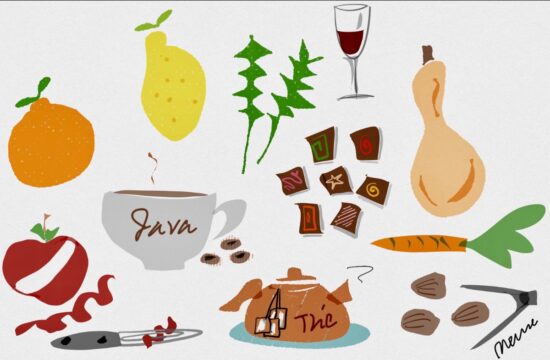
Human beings are marvelously equipped to enjoy the broad spectrum of sensations brought to them by their food and drink. Yet, science maintains that taste involves nothing more than a mere five distinct, foundational perceptions. These are sweet, sour, bitter, salty and the recently designated umami (savory).
It may be astonishing that the great and many-chambered house of gastronomy should have so few points of entry, but there you have it. Of these five, the bitter taste seems to me widely misunderstood and little appreciated, at least as far as wine is concerned. I’m here today to wonder aloud and in public why this should be so.
I’ll begin by noting that bitterness is a key contributor to the flavors of foods we enjoy everyday. Citrus fruits depend for much of their refreshing character on that slightly edgy bite (distinct from acidity) without which their high sugar content could well prove cloying. Beets, carrots, squashes, green beans and parsnips owe their delightfully earthy nature to bitterish compounds. Much of the appeal and culinary usefulness of cabbages, cauliflower and Brussels sprouts, as well as leafy greens like radicchio, kale, turnip tops and arugula derives from the same source.
Bitterish undertones add interest, countering the over-richness of some dishes, relieving the too-keen sweetness of others, offering a vigorous touché! to blandness and ho-hummery wherever they’re encountered. I lump these culinary counterculture types together as the Bitterverse. It’s a star-studded set — including such luminaries as coffee, tea, chocolate, walnuts, and — in an Oscar-worthy performance — the eponymous Italian digestive sip, amaro.
In wine, bitterness serves an identical purpose to all these. As a fruit product, wine naturally contains bitter compounds derived primarily from grape skins, pips and stems, but also present to some degree in juice. Still, talk of the bitter aspects of a wine at the point of sale is sure to turn some clientèle off. Why should this be so?
One reason is that few wine drinkers, save those who can be described as enthusiasts at some level, will have any idea that quality wine always harbors a bitter component or will be used to thinking of bitterness as making an essential contribution to both drinkability and interest.
Another is that bitterness is often confused with astringency — that disagreeable feeling of dryness similar to what you experience when sucking on a popsicle stick or wooden toothpick — and with abrasive, badly-managed tannins. But these have to do with texture, not taste.
I’ve left what is likely the most unwelcome piece of the argument for last, in the (not unreasonable) expectation that all but the most determined of readers will have by now have thrown in the towel and sought diversion elsewhere. It’s just this: An appreciation for the bitter elements in wine may be an acquired taste, but it’s one well worth making an effort to pick up.